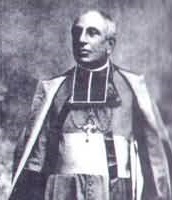Rennes-le-Château and the Secret Services
And other oddities
A Rational Consideration
Paul Smith
3 August 2015
Updated 21 August 2015
One of the strangest claims that has attached itself to Rennes-le-Château is the fantasy connection with secret services, implying that British Secret Intelligence Services were interested in Bérenger Saunière's activites.
Fantasies about Rennes-le-Château link the village with chivalric orders, stay behind units and Cold War politics – and that the Intelligence Services “made use of people who were interested in Rennes-le-Château” (the churches, NATO, Rosicrucians, the Trade Unions, Media, Publishers, Cabinets of Government – all “intersect and form part of a cohesive network” that ultimately includes the “secret” of Rennes-le-Château)
Georges Bertin, doctor of social sciences at Angers, has noted the Rennes-le-Château fantasy connections with “the Belgian cell of the Mossad as well as members of the French and American secret services, all dedicated to discovering the most important secret of humanity” (Lectures in Rennes-les-Bains: an example of interpretative delirium, 2005).
First of all, Monsignor Paul Félix Beauvain de Beauséjour, the Bishop of Carcassonne between 1902-1930, who stripped Bérenger Saunière of his priesthood, did not find anything strange or unusual about the village of Rennes-le-Château – it was his duty as a Bishop of a diocese to discipline any rogue priest who engaged in fraud by accepting more money than he was able to say masses for – and who also went behind the Bishop's back by flaunting the rules and responsibilities when it came to building projects from monies accumulated from the selling of masses, the final decision for which lay with the Bishopric and not with any mere parish priest.

On page 243 of Guy Patton's book Web of Gold (2000) mention is made that the late British comedian Michael Bentine (1922-1996) had warned “on several occasions that investigation into the affair of Rennes-le-Château could be dangerous” – and here the book leaves it, on this cliffhanger – as if nobody bothered to ask any follow-up questions to Bentine to clarify his statements – it could be argued that the passage in the book resembles sensationalist filler typically found in pages of conspiracy theory books.
Michael Bentine did not leave behind any first-hand references to Rennes-le-Château. All we have is something that he could have said published in a book 4 years after his death that no-one can follow up.
And if it can be proved that Michael Bentine ever said such a thing, what were his sources about Rennes-le-Château – certainly not René Descadeillas' Mythologie du Trésor de Rennes (1974). It was Gérard de Sède who started the ‘Certain Danger’ anecdote, unjustifiably attributing the galéjade to Abbé Mazières, on page 200 of his book L'Or de Rennes (1967).

Michael Bentine was in RAF Intelligence during World War II and later joined MI9. But Bentine was also interested in the paranormal and took the subject matter of the occult and secret societies seriously, as he himself explained in his 1981 book, The Door Marked Summer. Bentine published several books on parapsychology and was president of the Association for the Scientific Study of Anomalous Phenomena (ASSAP).

Michael Bentine was no skeptic. His 1988 novel Templar repeated the story of Joseph of Arimathea travelling to Britain with the boy Jesus and founding Glastonbury Abbey (elsewhere, Bentine had expressed his belief in the authenticity of the automatic writing of Frederick Bligh Bond at Glastonbury). Also in his novel Templar, Bentine placed emphasis upon sacred geometry and Chartres Cathedral; Queen Berengaria was equated with the Virgin Mary and the True Isis; the salient element in the novel was the Wisdom of Gnosis. The novel did not contain any elements relating to the Priory of Sion, the Jesus Bloodline or Rennes-le-Château.
If Michael Bentine did make such a statement as claimed in Guy Patton's Web of Gold, then it has to be viewed within the wider context of his serious beliefs in parapsychology, the paranormal, and secret societies – that may just have eclipsed his interest in the real life of Bérenger Saunière.
And evidential proof is required to sustain the claim that British Secret Intelligence Services were officially interested in Bérenger Saunière's activites at Rennes-le-Château – opposed to individuals who were privately interested in Bérenger Saunière (as presented in conspiracy theory books) because they also happened to be interested in the paranormal and the occult.
Three Resistance Corpses in Rennes-le-Château
Three bodies dug up in Rennes-le-Château in 1956 that were connected with World War II Resistance activities were never linked to any “mystery” to begin with (Jean Dunyach, The Gold of Rennes once more..., L’Indépendant, 29 November 1967). When the three bodies were linked to a “mystery” during the 1960s by authors like Gérard de Sède the Resistance explanation was suppressed by the conspiracy theorists because it debunked the ‘mystery’. René Descadeillas claimed the bodies were those of the Spanish Maquis (Mythologie du Trésor de Rennes, page 57).
Jean Dunyach wrote:
“As if we did not already have enough dead bodies there is the further mystery of the discovery, during excavations in 1956, of three corpses in the gardens of the Tour Magdala. If the author had taken the trouble to speak to the magistrates who conducted the inquest and who are still around and who are also very approachable then he would have learned if not the precise identity of the victims then at least their origin and under what circumstances they met their end. We note that, just twelve years after the War had ended, this matter did not arouse any particular interest at the time.”
Philippe de Chèrisey's Gladio in Circuit
The gladio on the cover of Philippe de Chèrisey's novel Circuit is not a reference to “Operation Gladio”, but to the location of Saunière's legendary treasure as found by the fictitious characters Charlot and Marie-Madeleine, located by the Guardian of the Sword (in the appendix called “L'Alibi d'O”, pages 127-137).
The story of Charlot and Marie-Madeleine discovering Saunière's legendary treasure was developed by Philippe de Chèrisey out of his explanation of the decipherment of the Large Parchment, one of the keywords being “Mort Épée” (Death Sword).
|
Below:
Michael Bentine belonged to MI9 that was the British Directorate of Military Intelligence Section 9, responsible for facilitating escapes of British prisoners of war and facilitating the return of those who succeeded in evading capture in enemy occupied territory during World War II – however, it would have been within his private interests in the occult and secret societies – outside of his MI9 duties – that Bentine would have commented about Rennes-le-Château (if he ever did).

|
|



